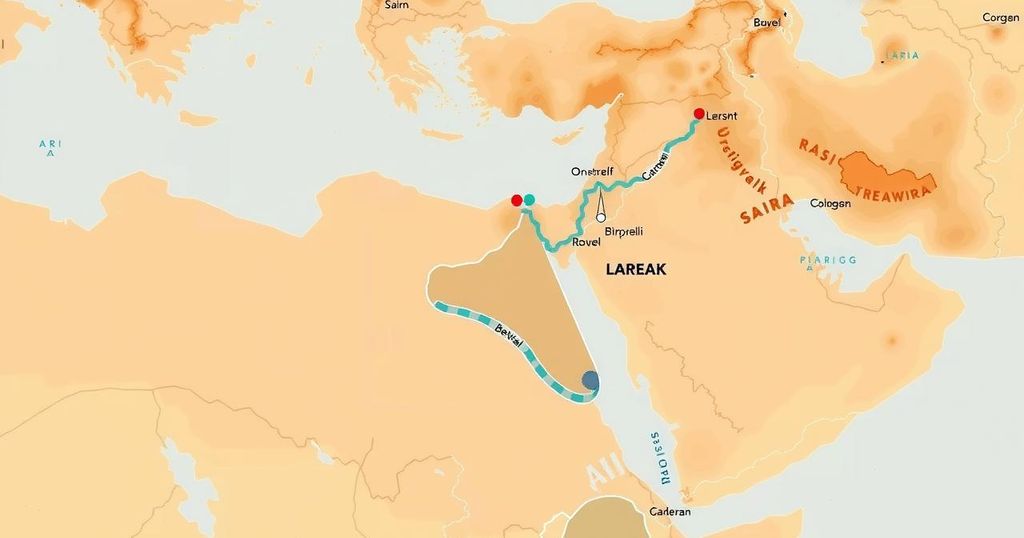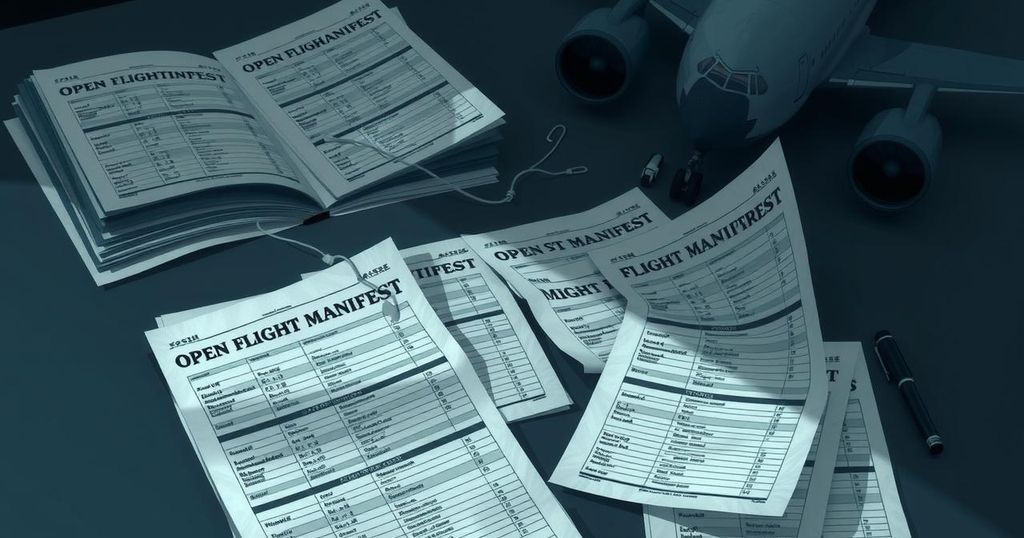Voluntary Land Swaps: A Possible Solution for Mideast Stability
Amidst shifting geopolitical dynamics in the Middle East, there are calls for voluntary land swaps to stabilize borders, especially for Jordan and Israel. With evolving threats from Iran and extremist groups, Jordan may benefit from controlling southern Syria to enhance security while allowing Israel to move its defense line eastward. This proposal could lead to economic revitalization and a strategic buffer in the region, if supported through careful negotiations. President Trump is viewed as a leader capable of fostering these discussions.
In the context of the Middle East, there is some chatter around the idea of voluntary land swaps as a solution for ongoing instability. Current borders, particularly in Jordan, seem increasingly inadequate. This comes amidst various political shifts, including a significant change in Syria and the ongoing leadership of President Donald Trump. As circumstances grow more tenuous for Arab regimes from the north and east, Jordan’s position becomes increasingly critical for regional and Western interests.
Jordan’s history is complex, rooted in the disintegration of the Arab Kingdom of Syria in the 1920s due to French imperial ambitions. The kingdom was divided, leaving the Hashemite rulers ousted and territories passed to Jordan. Historically, the threats to Jordan came mainly from Israel, as seen in conflicts during 1948 and 1967, with its eastern borders remaining protected. However, the situation has shifted dramatically, with the threat now posed from the east and north by forces like Iran and rising extremism.
Recent events have cranked up concerns for Jordan’s stability. The Assad regime’s rapid collapse, the quick advance of various military forces across the region, plus Turkey’s reassertion of itself all serve to heighten alarm bells in Amman. Today, the makeshift coastal defenses from the north and east include groups such as ISIS, al-Qaeda, and Hezbollah, which hover near the Jordanian border. Such a backdrop necessitates a strategic reevaluation of Jordan’s territorial makeup.
Indeed, many analysts argue that a land swap for southern Syria may serve Jordan better than its current borders along the Jordan River. This proposed swap could allow Jordan to guard itself more effectively against rising threats, while also expanding its economic territory. The swap is not only a defensive strategy; it could restore Jordan’s previous standing as a major regional players, enhancing prospects for growth and stability within the country.
But the land dynamics are equally critical for Israel. Following the turmoil of recent events, the idea that the Jordan River could function as an effective defensive line is increasingly being scrutinized. The recent Gaza conflict highlighted vulnerabilities. If the well-appointed border with Gaza could not stop a militia, what hope lies with the less fortified border with Jordan? In essence, the need for a more robust defense line pushes the conversation toward an eastward shift of Israel’s military position.
Though military cooperation could theoretically arise without a land swap, the notion of trading land appears to be the most straightforward, least contentious path forward. Reinforcing Jordan’s defenses while moving Israel’s line eastward could indeed contribute to a more secure environment for both parties.
Beyond military strategies, these land swaps might incite economic rejuvenation throughout the region. One can envision a revitalized agricultural economy in southern Syria, dubbed a potential “California of the Middle East.” Additionally, with a sizable influx of resources and workforce due to humanitarian efforts, the shift could be strategically planned. 2025 shines a light on the potential for labor availability, particularly from Gazan refugees, towards this refreshing concept.
Critically, the proposal does not involve forced relocations, which often escalate conflicts. People on both sides, once separated geographically, may actually stand better to reap the benefits of a swap. The engagement of the international community to support this transition could reflect a new direction in regional stability efforts. Though related to multiple sensitive issues, including the Palestinian conflict, the swap could create a buffer, potentially diffusing some tensions surrounding Palestinian autonomy.
As discussions advance, it is essential that such concepts remain confined to nuanced negotiations among respected leaders rather than being dissected publicly. The current administration, particularly President Trump, is in a position to tap into existing relationships with Arab counterparts to produce meaningful, lasting outcomes. With a new approach, there might just be an opportunity to eliminate longstanding conflicts and present a vision for cooperative peace in the region.
Voluntary land swaps have been fostered as a potential pathway to stability in the Middle East, particularly for Jordan and Israel. By restructuring borders, both nations could better defend against regional threats while enhancing economic prospects. As discussions progress, leadership needs to focus on building trusted relationships and entering negotiations in a careful and strategic manner. International backing and thoughtful planning may very well hold the key towards ushering in a new era of peace while addressing complex territorial issues intricately tied to the region’s ongoing struggles.
Original Source: www.jpost.com




Post Comment